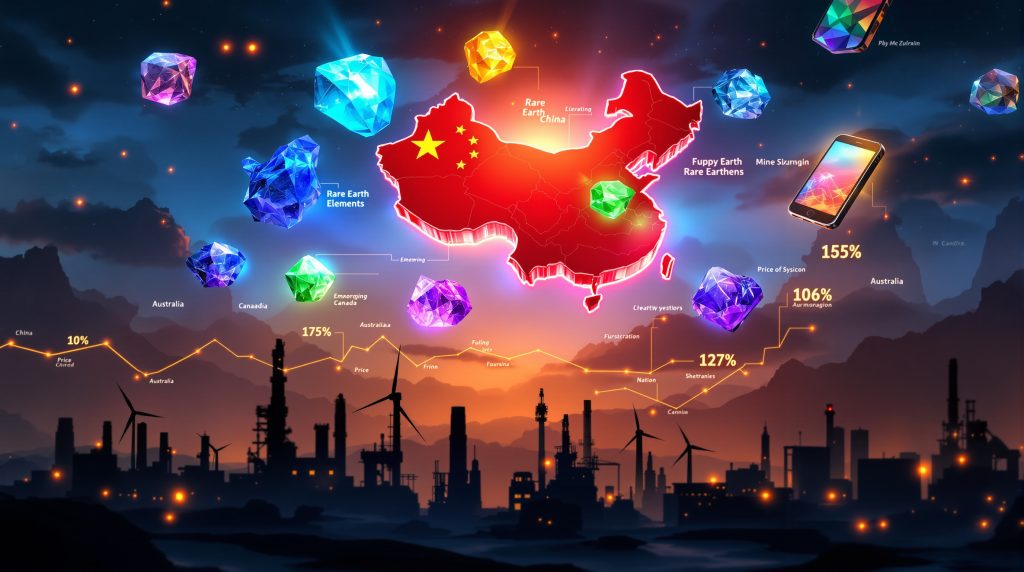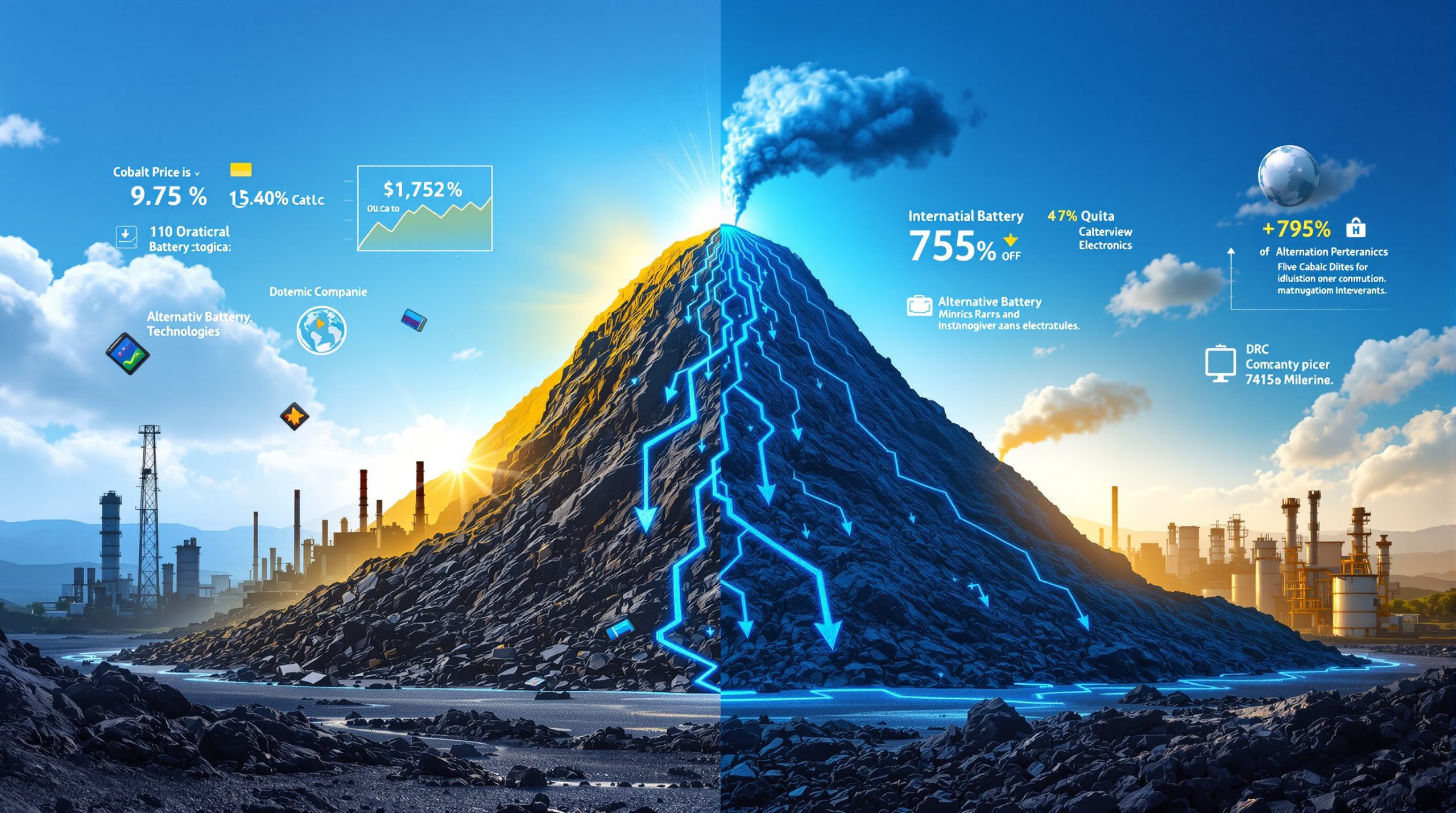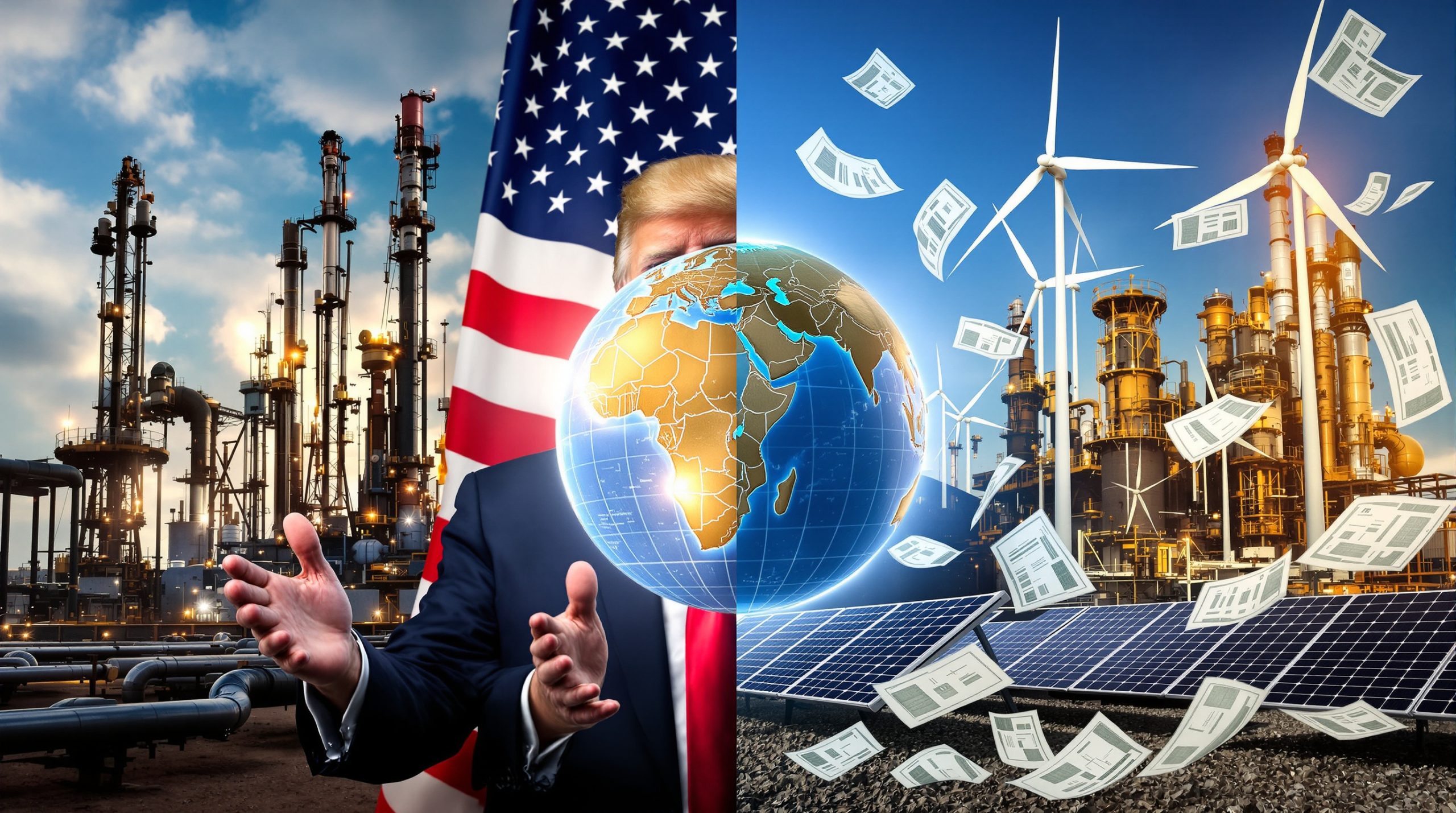China's Rare Earth Export Restrictions: Strategic Impact on Global Supply Chains
China has implemented increasingly stringent export restrictions on rare earth elements (REEs) and related products, creating significant ripple effects across global supply chains. These strategic minerals—critical components in everything from smartphones to electric vehicles and defense systems—have become powerful geopolitical leverage points as trade tensions escalate worldwide.
Understanding China's Dominant Position in Rare Earths
China commands an overwhelming share of the global rare earth market, controlling approximately 70% of global mining production according to the U.S. Geological Survey. The country processes between 85-90% of the world's rare earth materials and manufactures nearly 92% of high-performance rare earth magnets, as reported by Bloomberg in March 2024.
This concentration of capacity gives Beijing exceptional influence over industries dependent on these materials, particularly as global demand continues to surge with the expansion of green technologies and advanced electronics. Furthermore, the rare earth reserves distribution shows China's strategic advantage in controlling these vital resources.
What Specific Restrictions Has China Implemented?
China's rare earth export controls have evolved through a strategic, phased approach throughout 2025, creating increasingly complex challenges for global supply chains.
Phased Implementation of Export Controls
April 2025: Initial Targeted Controls
- Established export licensing requirements for seven medium and heavy rare earth elements: samarium, gadolinium, terbium, dysprosium, lutetium, scandium, and yttrium
- Implemented controls on permanent magnets containing these elements
- Created a case-by-case approval system for exports
July 2025: Expanded Product Restrictions
- Announced comprehensive ban (effective July 1, 2025) on exports of rare earth alloys, finished magnets, and chemical mixtures ready for manufacturing
- Shifted focus from raw materials to value-added products
- Targeted industries requiring processed materials for immediate use
October 2025: Extraterritorial Controls
- Extended restrictions to foreign-produced goods containing Chinese-origin rare earths
- Applied threshold of 0.1% of item value for determining control status
- Implemented China's version of the "foreign direct product rule"
- Restricted technology transfers related to extraction methods, smelting techniques, magnet production processes, and recycling technologies
Why Are These Restrictions So Impactful?
The strategic importance of rare earth elements stems from their irreplaceable role in numerous high-value industries and advanced technologies.
Critical Applications Across Strategic Industries
Rare earth elements serve as essential inputs for numerous high-value industries:
| Industry | Applications | Critical Elements |
|---|---|---|
| Defense | Missile guidance systems, radar, night vision | Neodymium, Samarium, Dysprosium |
| Renewable Energy | Wind turbine generators, solar panels | Neodymium, Praseodymium, Dysprosium |
| Electric Vehicles | Motors, batteries, catalytic converters | Neodymium, Praseodymium, Lanthanum |
| Electronics | Smartphones, hard drives, speakers | Neodymium, Europium, Terbium |
| Medical Technology | MRI machines, surgical tools | Gadolinium, Erbium, Holmium |
Limited Alternative Supply Sources
The restrictions are particularly challenging because:
- Few mines outside China are currently operational at scale
- Building processing capacity requires 5-10 years and substantial investment
- Technical expertise in processing is concentrated within China
- Environmental challenges in extraction and processing limit rapid expansion elsewhere
According to China's new rare earth and magnet restrictions reported by CSIS, while China holds approximately 34% of global rare earth reserves (44 million metric tons out of 130 million metric tons worldwide), it dominates production capacity through decades of strategic investment and technical development.
How Are Global Markets Responding to China's Restrictions?
The impact of China's rare earth export controls has reverberated throughout global financial markets, creating volatility across multiple asset classes.
Price Volatility and Supply Uncertainty
The market impact has been substantial:
- Precious metals have surged, with gold reaching record levels above $4,100 per ounce
- Silver trading above $51 per ounce, representing approximately 70% gains year-to-date
- Supply chain disruptions have created delivery delays of 3-6 months for some components
- Contract negotiations now include "force majeure" clauses specific to rare earth availability
- Spot market transactions have decreased as material becomes harder to source
Strategic Responses from Affected Nations
Countries are implementing various countermeasures:
United States
- Accelerated funding for domestic rare earth projects through the Critical Minerals Initiative
- Established strategic minerals reserve of key materials
- Expanded recycling programs for rare earth recovery from electronic waste
- Developed alternative technologies requiring fewer restricted elements
The U.S. Department of Defense has established the Defense Production Act Title III program specifically targeting domestic rare earth element production and processing capabilities.
European Union
- Launched European Raw Materials Alliance with dedicated rare earth focus
- Invested in processing facilities in Sweden and Finland
- Negotiated supply agreements with Australia and Canada
- Implemented recycling mandates for electronics containing rare earth elements
The European Commission introduced the European raw materials facility in March 2023, setting ambitious targets for domestic extraction, processing, and recycling.
Japan
- Expanded partnerships with Vietnam and Malaysia for rare earth processing
- Increased government subsidies for companies developing substitute materials
- Established stockpiles of critical elements
- Advanced battery recycling breakthrough technologies for recovering rare earths from industrial waste
Japan's Oil, Gas and Metals National Corporation (JOGMEC) continues to invest in rare earth projects globally while developing sophisticated recycling technologies.
What Are the Licensing Mechanisms Behind China's Export Controls?
China has established a comprehensive legal framework for controlling rare earth exports, creating significant procedural hurdles for international buyers.
Complex Approval Process
China's export control system operates under the Export Control Law of the People's Republic of China, which took effect December 1, 2020. The system functions through multiple layers:
-
Initial Application: Exporters must submit detailed documentation about:
- End-user identity and verification
- Specific application of materials
- Technical specifications of products
- Quantity and concentration of rare earth content
-
Multi-Agency Review: Applications undergo scrutiny by various government entities
-
Approval Criteria: Decisions typically consider:
- National security implications
- Relationship with recipient country
- Strategic value of the specific application
- Domestic supply requirements
- Environmental compliance history
-
Conditional Approvals: Many licenses include requirements for:
- Regular reporting on material usage
- Prohibitions on third-party transfers
- Quantity limitations
- Time-limited validity periods
Denial Patterns
Applications are frequently denied when:
- Materials are destined for military applications
- End-users appear on restricted entity lists
- Quantities exceed normal commercial requirements
- Documentation contains inconsistencies
- Previous violations of export conditions have occurred
How Does This Connect to Broader Trade Tensions?
China's rare earth restrictions exist within a complex web of global trade tensions and geopolitical realignment.
Geopolitical Context
China's rare earth restrictions exist within a complex web of trade actions:
- Implemented shortly after U.S. announcements of potential 100% tariffs on Chinese goods
- Coincided with increased maritime inspection requirements for Chinese cargo
- Followed Western restrictions on semiconductor equipment exports to China
- Paralleled other strategic mineral export controls (gallium, germanium, graphite)
China previously implemented export controls on gallium and germanium in July 2023 and on certain graphite products in October 2023, establishing a pattern of strategic material restrictions. As reported by Reuters, these actions align with broader geopolitical objectives.
WTO Compliance Questions
The restrictions have raised international trade concerns:
- Potential violation of China's WTO commitments regarding export restrictions
- Questions about whether national security justifications are legitimate
- Debate over discriminatory application of licensing requirements
- Concerns about transparency in the approval process
What Industries Face the Greatest Vulnerability?
Different sectors face varying levels of exposure to China's rare earth restrictions, with some facing immediate challenges while others have more flexibility.
Sector-Specific Impact Analysis
The restrictions create varying levels of exposure across industries:
Highest Vulnerability
- Defense Electronics: Heavily dependent on specialized magnets containing dysprosium and terbium
- Wind Turbine Manufacturing: Requires large quantities of neodymium and praseodymium for generators, with offshore wind turbines requiring 600-1,000 kg of rare earth magnets per megawatt
- Electric Vehicle Production: Relies on rare earth magnets for motors (typically 1-2 kg per vehicle) and battery components
Moderate Vulnerability
- Consumer Electronics: Affected by magnet restrictions but with more substitution possibilities
- Medical Equipment: Critical for certain applications but lower volume requirements
- Robotics: Dependent on precision motors using rare earth magnets
Lower Vulnerability
- Traditional Automotive: Less dependent on rare earth elements except in catalytic converters
- Conventional Energy: Limited direct exposure except in certain specialized equipment
- Construction: Minimal direct requirements for rare earth materials
According to the Congressional Research Service, the U.S. defense industrial base imported approximately 80% of its rare earth compounds from China as of 2023, highlighting the strategic vulnerability in this sector.
How Are Companies Adapting Their Supply Chains?
Businesses are implementing various mitigation strategies to address the challenges posed by China's rare earth export restrictions.
Strategic Adjustments
-
Diversification Efforts
- Developing relationships with emerging suppliers in Australia, Canada, and Africa
- Investing in mining projects outside China
- Creating joint ventures with processing companies in Southeast Asia
MP Materials (formerly Molycorp) has reopened the Mountain Pass mine in California and is developing on-site processing capabilities, producing approximately 43,000 metric tons of rare earth concentrate in 2023.
-
Technical Adaptations
- Redesigning products to reduce rare earth content
- Developing alternative technologies using more accessible materials
- Implementing more efficient manufacturing processes to minimize waste
Several automotive manufacturers are exploring induction motors and switched reluctance motors that don't require rare earth magnets, though these typically have lower power density.
-
Vertical Integration
- Acquiring stakes in mining operations
- Investing in in-house processing capabilities
- Developing closed-loop recycling systems
General Motors invested $200 million in MP Materials in 2021 to secure rare earth supply for electric vehicle motors.
-
Inventory Management
- Building larger buffer stocks of critical materials
- Extending planning horizons for material requirements
- Implementing more sophisticated tracking systems for rare earth content
What Are the Long-Term Implications of China's Strategy?
China's rare earth export restrictions are catalyzing profound structural changes in global supply chains and technology development.
Reshaping Global Supply Chains
China's restrictions are catalyzing structural changes:
- Accelerating development of mines in Australia, Canada, and the United States
- Stimulating investment in processing facilities outside China
- Driving research into substitute materials and recycling technologies
- Creating new strategic partnerships between countries with complementary resources
Technological Innovation
The restrictions are spurring advances in several areas:
- Development of motors and generators requiring fewer rare earth elements
- Creation of more efficient recycling processes for recovering rare earths
- Research into synthetic alternatives for certain applications
- Improved extraction techniques for lower-grade deposits
Current global rare earth recycling rates remain below 1% of total supply, according to the United Nations Environment Programme, but new technologies are improving recovery rates, particularly from hard disk drives, permanent magnets, and batteries.
Market Restructuring
The global rare earth market is undergoing fundamental changes:
- Premium pricing for "China-free" supply chains
- Emergence of specialized trading platforms for rare earth materials
- Development of more sophisticated futures and options markets
- Creation of industry consortiums for securing supply
What Should Investors and Businesses Watch For?
Several key indicators will signal how the rare earth situation evolves in the coming months and years.
Key Indicators of Future Developments
-
Policy Signals
- Changes in China's five-year plans regarding rare earth production
- Statements from China's Ministry of Commerce about export policies
- Trade negotiation outcomes between major economies
- New critical mineral strategies from Western governments
China's 14th Five-Year Plan (2021-2025) designated rare earths as a strategic industry requiring government support and oversight. The 15th Five-Year Plan (2026-2030) is currently under development.
-
Market Metrics
- Price spreads between Chinese and non-Chinese rare earth sources
- Investment flows into rare earth mining and processing projects
- Patent applications for alternative technologies
- Inventory levels reported by major manufacturers
-
Corporate Movements
- Strategic acquisitions in the rare earth supply chain
- New processing facility announcements
- R&D investments in substitute materials
- Changes in product designs to reduce rare earth dependence
Investment Strategy Insights
Financial expert Daniel Lacalle advises investors to "surf this market" by avoiding "sectors that require stronger economic growth" while remaining invested because staying out means "you are already taking a bet which is an enormous bet on revaluation of currencies."
Lacalle describes gold and silver as "truth tellers of monetary policy" that are "reacting to policy failure" rather than simply acting as safe havens. He suggests that the traditional 60/40 investment portfolio (60% equities, 40% bonds) is becoming obsolete, with investors potentially needing to allocate 20% to precious metals as protection against currency debasement.
How Can Countries Reduce Their Vulnerability?
Countries are implementing comprehensive strategies to address their dependence on Chinese rare earth supplies.
National Resilience Strategies
-
Supply Diversification
- Mapping domestic rare earth resources and accelerating development
- Forming international partnerships with alternative suppliers
- Investing in processing infrastructure
- Creating strategic reserves of critical materials
-
Technological Solutions
- Funding research into substitute materials
- Developing more efficient use of existing materials
- Advancing recycling technologies
- Creating design standards that minimize critical material requirements
-
Regulatory Frameworks
- Streamlining permitting processes for new mining and processing facilities
- Creating tax incentives for domestic production
- Implementing mandatory recycling programs
- Developing certification systems for responsibly sourced materials
What's Next for Global Rare Earth Markets?
The rare earth landscape will continue to evolve in response to both market forces and geopolitical factors.
Future Trajectory
The rare earth landscape will likely evolve along several dimensions:
- Price Stabilization: After initial volatility, markets will adjust as new supplies come online
- Supply Diversification: Non-Chinese sources will grow from current 15-20% to potentially 35-40% by 2030
- Technological Adaptation: Products will increasingly be designed to minimize rare earth requirements
- Recycling Growth: Recovery of rare earths from waste streams will become economically viable at scale
- Geopolitical Balancing: New partnerships will emerge between resource-rich countries and manufacturing centers
As the transition to cleaner energy accelerates, energy transition minerals will become increasingly important in global supply chains.
Potential Scenarios
Three possible futures are emerging:
- Negotiated Equilibrium: China and major economies reach accommodations that stabilize supply chains
- Accelerated Decoupling: Supply chains fragment along geopolitical lines with parallel systems
- Technological Leapfrog: Breakthrough innovations reduce dependence on traditional rare earth applications
Financial expert Daniel Lacalle characterizes the current trade situation as "a negotiation in real time" rather than a full-blown economic war. He notes that "China needs the United States market" and predicts that both parties will eventually "reach an agreement."
FAQ: Critical Questions About China's Rare Earth Restrictions
What exactly are rare earth elements and why are they so important?
Rare earth elements comprise 17 metals on the periodic table with unique magnetic, luminescent, and electrochemical properties. Despite their name, most aren't particularly rare in the Earth's crust, but they're difficult to extract because they're typically found dispersed rather than concentrated in ore deposits.
Their importance stems from their irreplaceable role in many high-technology applications:
- Neodymium and praseodymium create the world's strongest permanent magnets
- Europium, terbium, and yttrium enable color displays in electronics
- Lanthanum and cerium serve as catalysts in petroleum refining
- Samarium and gadolinium have critical applications in medical imaging
How quickly can new rare earth mines and processing facilities be developed outside China?
Developing new rare earth capacity involves significant challenges:
- Timeframes: Typically 7-10 years from exploration to production
- Capital Requirements: $500 million to $1 billion for integrated mining and processing
- Technical Hurdles: Complex metallurgy requiring specialized expertise
- Environmental Considerations: Managing radioactive byproducts and chemical processing waste
- Regulatory Approvals: Navigating permitting processes in various jurisdictions
Projects already in advanced development stages may come online within 2-3 years, but building substantial capacity to offset Chinese dominance will likely require a decade or more.
Are there effective substitutes for rare earth elements in critical applications?
Substitution possibilities vary significantly by application:
- Permanent Magnets: Some progress with iron-nitride magnets, but performance gaps remain
- Catalysts: Alternative materials exist but with efficiency penalties
- Phosphors: Organic alternatives show promise for some applications
- Polishing: Silicon-based alternatives work for less demanding applications
The most promising approach combines partial substitution with more efficient use of rare earths in redesigned products. However, complete elimination from high-performance applications remains challenging with current technology.
How effective is rare earth recycling as a solution to supply constraints?
Recycling presents both opportunities and limitations:
Current Status:
- Only about 1% of rare earths are currently recycled globally
- Recovery is technically challenging due to low concentrations in products
- Economic viability is limited by collection costs and processing complexity
Future Potential:
- New technologies are improving recovery rates from electronic waste
- Direct recycling of manufacturing scrap shows high recovery potential
- Urban mining of landfills could become economically viable with improved processes
- Specialized recycling for high-value applications (wind turbines, EV motors) is advancing rapidly
With continued investment, recycling could potentially meet 15-25% of demand by 2030, providing an important supplement to primary production.
Ready to Stay Ahead of Major Mineral Discoveries?
Gain instant alerts on significant ASX discoveries with Discovery Alert's proprietary Discovery IQ model, transforming complex mineral data into actionable trading opportunities. Explore why historic discoveries generate substantial returns by visiting the dedicated discoveries page and begin your 30-day free trial today.




